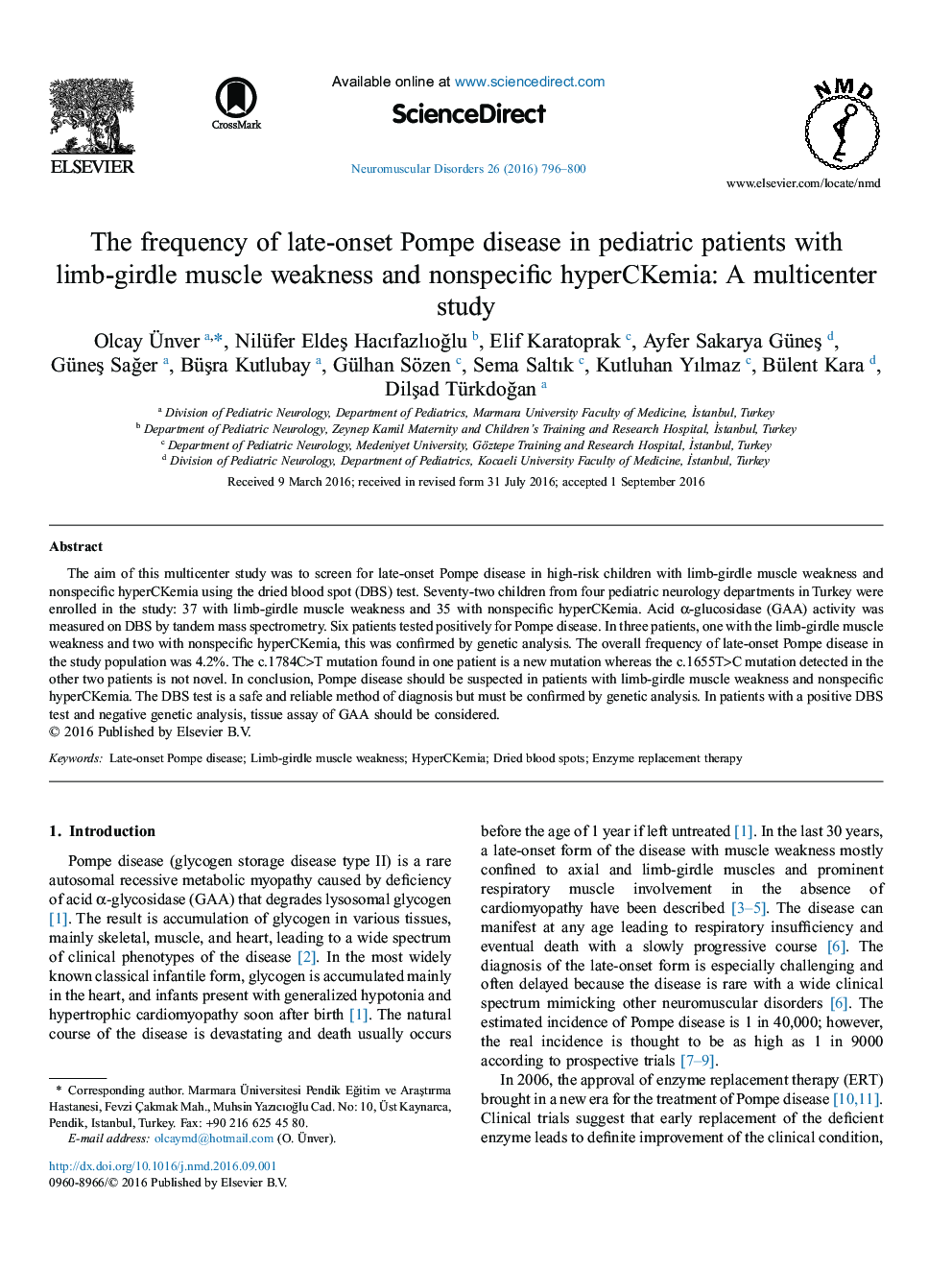| Article ID | Journal | Published Year | Pages | File Type |
|---|---|---|---|---|
| 5632230 | Neuromuscular Disorders | 2016 | 5 Pages |
â¢We screened 72 children with limb-girdle muscle weakness or nonspecific hyperCKemia for Pompe disease in Turkey.â¢4.2% of children had late-onset Pompe disease.â¢DBS test is a reliable diagnostic tool for Pompe disease in high-risk populations.â¢Genetic analysis should be performed for confirmation when results of DBS test are abnormal.
The aim of this multicenter study was to screen for late-onset Pompe disease in high-risk children with limb-girdle muscle weakness and nonspecific hyperCKemia using the dried blood spot (DBS) test. Seventy-two children from four pediatric neurology departments in Turkey were enrolled in the study: 37 with limb-girdle muscle weakness and 35 with nonspecific hyperCKemia. Acid α-glucosidase (GAA) activity was measured on DBS by tandem mass spectrometry. Six patients tested positively for Pompe disease. In three patients, one with the limb-girdle muscle weakness and two with nonspecific hyperCKemia, this was confirmed by genetic analysis. The overall frequency of late-onset Pompe disease in the study population was 4.2%. The c.1784C>T mutation found in one patient is a new mutation whereas the c.1655T>C mutation detected in the other two patients is not novel. In conclusion, Pompe disease should be suspected in patients with limb-girdle muscle weakness and nonspecific hyperCKemia. The DBS test is a safe and reliable method of diagnosis but must be confirmed by genetic analysis. In patients with a positive DBS test and negative genetic analysis, tissue assay of GAA should be considered.
